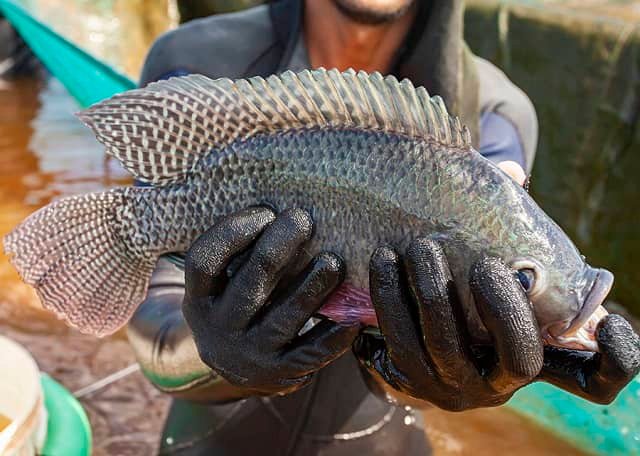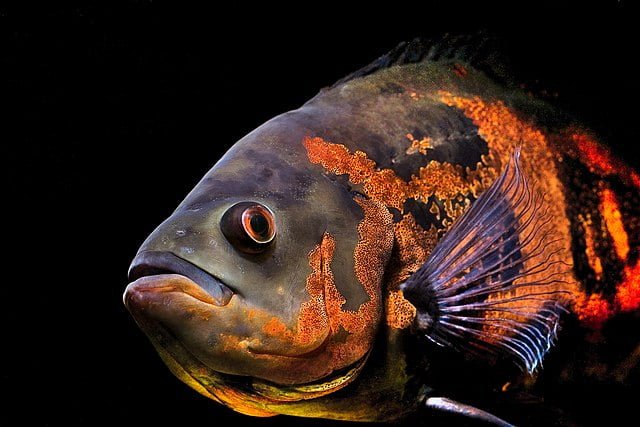
The production of tilapia has been increasing worldwide. Brazil, in particular, has experienced impressive growth, becoming the fourth largest producer and showing the potential of tilapia as a sustainable food source.
However, high demand from fish farmers necessitates a constant supply of high-quality fingerlings. Here is where the natural prolificacy of tilapia can be a double-edged sword. While females can produce thousands of eggs per spawn, a unique reproductive behavior called “split spawning” can limit the number of eggs available for fertilization.
Researchers from UNESP conducted a study to verify the possibility of obtaining genetic gain through the selection of breeders based on estimates of genetic parameters for reproductive performance traits of tilapia females (Oreochromis sp.) from a commercial population.
The study investigated the possibility of breeding tilapia with improved reproductive performance through the selection of females based on specific traits.
Selective breeding programs
Several factors influence spawning intervals, including temperature, light cycles, nutrition, and management practices. However, there is a hidden factor at play: individual genetic traits. Surprisingly, most tilapia breeding programs have not emphasized these traits, focusing mainly on growth and disease resistance.
This could become a bottleneck in the future. To ensure sustainable, high-volume production, it’s essential to have readily available superior genetic stock. Research focused on maternal lines with exceptional reproductive performance is key to unlocking the full potential of tilapia aquaculture.
The good news?
Research suggests significant potential for genetic gain through selection to improve reproductive performance. Studies have shown moderate to high heritability for key traits such as spawning success and frequency. This means that these traits are strongly influenced by genetics, making them prime targets for selective breeding.
Stay Always Informed
Join our communities to instantly receive the most important news, reports, and analysis from the aquaculture industry.
The power of shorter spawning intervals
Imagine a tilapia that spawns more frequently. This translates to a constant supply of fingerlings for producers and a boon for genetic improvement programs. Studies show that reducing the interval between spawnings has several advantages:
- More fingerlings, more frequently: Consistent spawning cycles ensure a steady flow of young fish to meet market demands.
- Increased egg production: More frequent spawning results in a higher overall volume of eggs, maximizing production potential.
- Smoother genetic improvement: Faster breeding cycles allow for the assessment of similarly aged animals, streamlining data analysis and genetic selection programs.
The science behind selection
Researchers analyzed data on tilapia females from a commercial population over a 12-year period (2009-2021). They focused on four key reproductive traits:
- Total egg volume: Total number of eggs produced by a female.
- Average egg volume: Size of individual eggs.
- Spawning frequency: How often a female spawns eggs.
- Spawning interval: Time between spawning events.
Key findings
The study demonstrated that breeding tilapia based on genetic factors can yield significant improvements in reproductive performance.
Heredity estimates, indicating the proportion of phenotypic variation (observable traits) attributable to genetic variation, were found to be moderate to high for all measured reproductive traits. This is good news for breeders, as it signifies a strong genetic influence on these traits.
The analysis revealed a particularly strong correlation between total egg volume and spawning interval. Selecting females with high total egg volume would also lead to shorter intervals between spawning cycles, maximizing egg production.
Decoding the numbers
Heredity values were reported with a range (e.g., 0.26 ± 0.14 for total egg volume). This represents the estimated value and the degree of uncertainty.
Another interesting finding was the high repeatability (>0.43) for all traits. This suggests that females tend to maintain consistent reproductive performance throughout their reproductive cycles.
Implications for tilapia fish farming
These findings offer valuable insights for tilapia producers looking to optimize their breeding programs. By incorporating data-driven selection based on key genetic parameters, producers can achieve:
- Increased egg production: Selecting females with higher total egg volume potential translates to more offspring per reproductive cycle.
- Improved efficiency: Shorter spawning intervals mean more frequent egg production, leading to higher overall production.
- Sustainable practices: Selective breeding to enhance reproductive performance can contribute to a more sustainable aquaculture industry by maximizing production from existing populations.
Conclusion
The strong correlation between total egg volume and spawning interval is particularly noteworthy. Selecting females with high total egg volume is likely to also result in shorter spawning intervals, maximizing egg production.
Further research is needed to refine breeding strategies and optimize selection methods. However, this study represents a significant step forward in improving tilapia aquaculture through genetic selection. Additionally, providing appropriate breeding and nutrition conditions to the breeders is important for achieving higher performance.
Reference
Gornati Gonçalves, T., Da Silva Ataides, K., Carvalheiro, R., Nova, F. A. P. C., & Neto, R. V. R. (2024). Genetic parameter estimates indicate the possibility of genetic gain by selecting for reproductive traits of females from a commercial tilapia population (Oreochromis niloticus). Aquaculture, 586, 740818. https://doi.org/10.1016/j.aquaculture.2024.740818
Editor at the digital magazine AquaHoy. He holds a degree in Aquaculture Biology from the National University of Santa (UNS) and a Master’s degree in Science and Innovation Management from the Polytechnic University of Valencia, with postgraduate diplomas in Business Innovation and Innovation Management. He possesses extensive experience in the aquaculture and fisheries sector, having led the Fisheries Innovation Unit of the National Program for Innovation in Fisheries and Aquaculture (PNIPA). He has served as a senior consultant in technology watch, an innovation project formulator and advisor, and a lecturer at UNS. He is a member of the Peruvian College of Biologists and was recognized by the World Aquaculture Society (WAS) in 2016 for his contribution to aquaculture.




